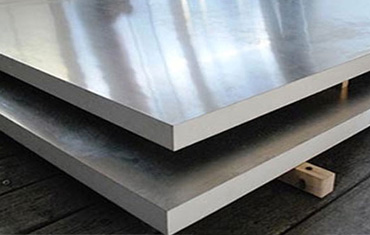Alloy steel plates are structural steel plates that are alloyed with other elements to enhance their mechanical properties, such as strength, toughness, hardness, and wear resistance. The specific alloying elements and their concentrations determine the characteristics of the alloy steel plates. Here are some commonly used alloy steel grades for plates:
- ASTM A387: This specification covers chromium-molybdenum alloy steel plates for elevated temperature service. Grades within this specification include:
- Grade 11: Offers excellent resistance to high-temperature corrosion and oxidation.
- Grade 12: Provides enhanced strength at elevated temperatures and good weldability.
- Grade 22: Offers improved tensile strength and creep resistance at high temperatures.
- Grade 91: Provides excellent high-temperature strength and corrosion resistance.
- ASTM A514: This specification covers high-yield strength, quenched, and tempered alloy steel plates used in structural applications. It includes various grades, such as:
- Grade B: Offers high strength and good weldability.
- Grade H: Provides high strength with improved toughness at low temperatures.
- Grade F: Offers exceptional strength and impact toughness.
- ASTM A572: This specification covers high-strength low-alloy (HSLA) structural steel plates with improved formability. Grades within this specification include:
- Grade 50: Provides a combination of good strength, weldability, and formability.
- Grade 60: Offers higher strength and improved notch toughness.
- Grade 65: Provides high strength and good notch toughness at lower temperatures.
- ASTM A36: Although not technically an alloy steel, A36 is a commonly used carbon steel grade for structural applications. It offers good strength, formability, and weldability.
- ASTM A514: This specification covers quenched and tempered alloy steel plates used in structural applications. It includes various grades, such as:
- Grade P: Provides high strength with good weldability and toughness.
- Grade Q: Offers excellent weldability and toughness at low temperatures.
- Grade S: Provides improved formability and toughness.
- ASTM A387: This specification covers chromium-molybdenum alloy steel plates for pressure vessels. Grades within this specification include:
- ASTM A387 Gr5 Plate: Offers good corrosion and heat resistance.
- ASTM A387 Gr9 Plate: Provides improved creep resistance and higher temperature strength.
- ASTM A387 Gr22 Plate: Offers excellent high-temperature strength and corrosion resistance.
These are just a few examples of alloy steel plate grades commonly used in various industries. The selection of a specific grade depends on the intended application, the required mechanical properties, and any specific environmental conditions. It is important to consult the appropriate specifications, standards, or a materials engineer to ensure the suitable alloy steel plate grade is chosen for a particular project.
For More Details : https://www.navrekhasteel.com/





Comments